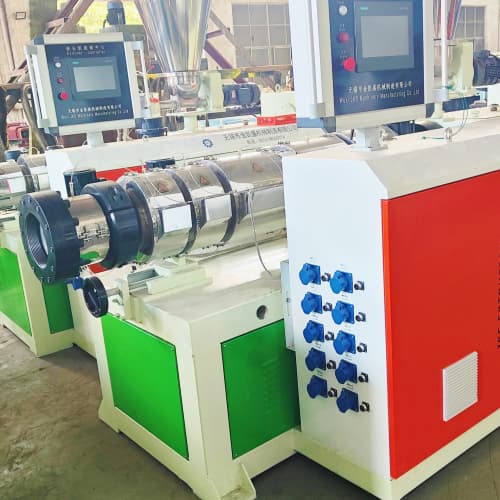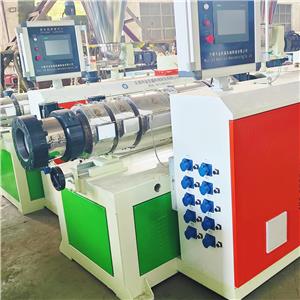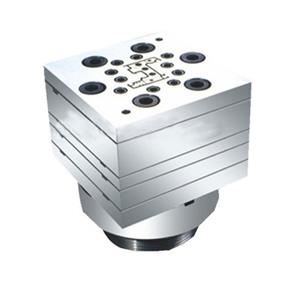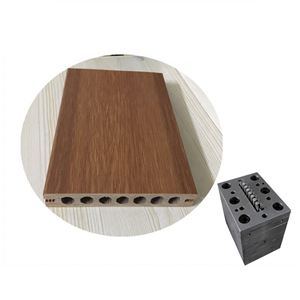What Is a Plastic Extrusion Line and How Does It Work?
What Is a Plastic Extrusion Line and How Does It Work?
A plastic extrusion line enables you to turn raw plastic materials into continuous shapes such as pipes, sheets or profiles. By feeding plastic pellets into an extrusion machine, melting them and forcing them through a shaped die, the system produces uniform, high-quality finished products at scale. This highly efficient extrusion line technology is used across packaging, construction and consumer goods industries.

Plastic Extrusion Line Basics
What Is a Plastic Extrusion Line?
In simple terms, what is an extrusion line? It is a production system that melts plastic material and pushes it through a die to create long, continuous forms. With this method you can deliver custom shapes and consistent thickness, making the process ideal for high-volume manufacturing of plastic products.
Main Components
Every high-performance extrusion system includes core parts: the extruder unit, hopper, screw and barrel, die assembly, cooling system, puller unit and cutter. Each component plays a key role in shaping the extrusion plastic output precisely and reliably. The extruder melts and transports the plastic, the die defines the shape, the cooling system solidifies it, and the puller and cutter finish it into desired lengths.
How Plastic Extrusion Machines Work
The process begins with plastic pellets loaded into the hopper. The screw rotates and pushes the material through the barrel which is heated to melt the plastic. The molten plastic advances into the die, is shaped and then enters the cooling stage where the form solidifies. Finally, the machine pulls the product through at a consistent speed and cuts it into segments. This detailed flow defines the plastic extrusion process.
Types and Applications
Types of Plastic Extrusion
Different models of extrusion line exist to meet specific needs. You have single-screw systems for general shapes, twin-screw for compounding or mixing, profile extrusion for door or window frames, pipe extrusion for conduits and sheets for packaging or building materials.
Materials Used
Manufacturers use a variety of plastics including PE, PP, PVC, PETG and PLA. Each material offers unique properties: PE works well for pipes, PVC for construction profiles, PLA for eco-friendly packaging. Choosing the right material ensures efficient performance in your extrusion line.
Industry Applications
From consumer packaging films to rigid construction profiles, the benefits of a high-quality plastic extrusion line span multiple industries. Whether you’re creating sheets for home goods, profiles for architecture or tubes for pneumatic systems, extrusion technology delivers volume and repeatability.
Advantages and Limitations
Key Benefits
An extrusion line offers rapid production of consistent product, flexibility in shapes and sizes, and efficient use of material. Because the plastic extrusion line system runs continuously and uses fewer steps than alternate methods, it tends to deliver lower waste and strong unit economics.
Main Challenges
Despite its merits, the system has drawbacks. Some shapes are difficult or impossible without specialized dies; not all materials extrude equally well; and maintenance and die quality are critical. If you skip quality control or use inappropriate settings, defects may arise. Proper training and support remain essential.
FAQ
What products can you make with a plastic extrusion line?
You can manufacture pipes, sheets, profiles, tubing, and films. The system is versatile enough to handle a wide range of end-product shapes and sizes.
How do you choose the right plastic extrusion machine?
Consider your intended product shape, material choice, required output volume, and budget. Ensure the machine includes suitable capabilities for your material and die design.
What materials work best in plastic extrusion?
Common choices include PE for pipes, PP for profiles, PVC for construction use, PETG for clear sheets and PLA for eco packaging. Match material to application for best results.
How do you maintain a plastic extrusion line?
Keep the screw, barrel and die clean and serviced regularly. Monitor temperatures and extrusion speed, inspect parts for wear and ensure cooling systems remain effective.
Where can you get technical support for your extrusion line?
Reputable suppliers like Zhongjie Mould provide full training, spare part availability and after-sales service to keep your line running efficiently.




